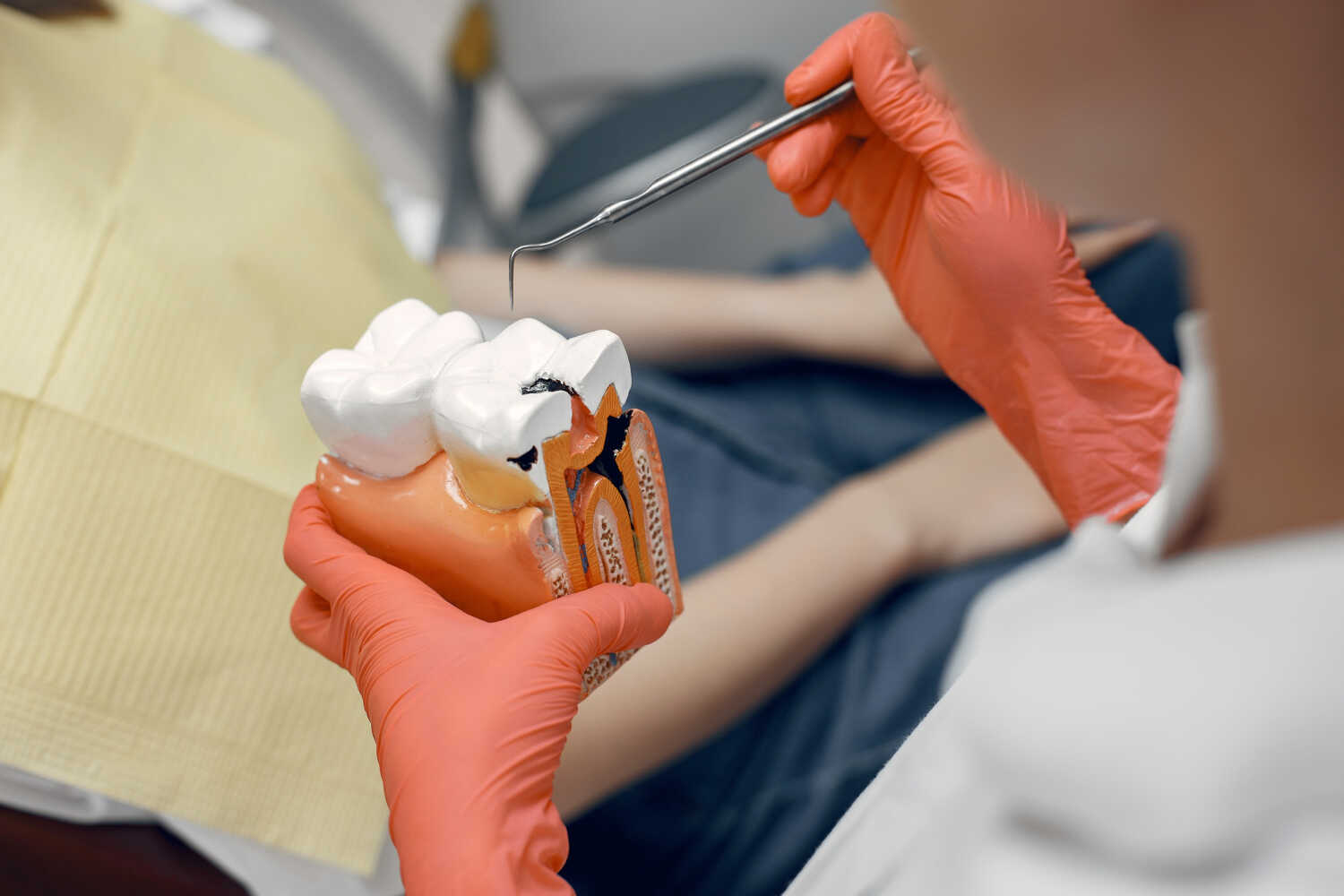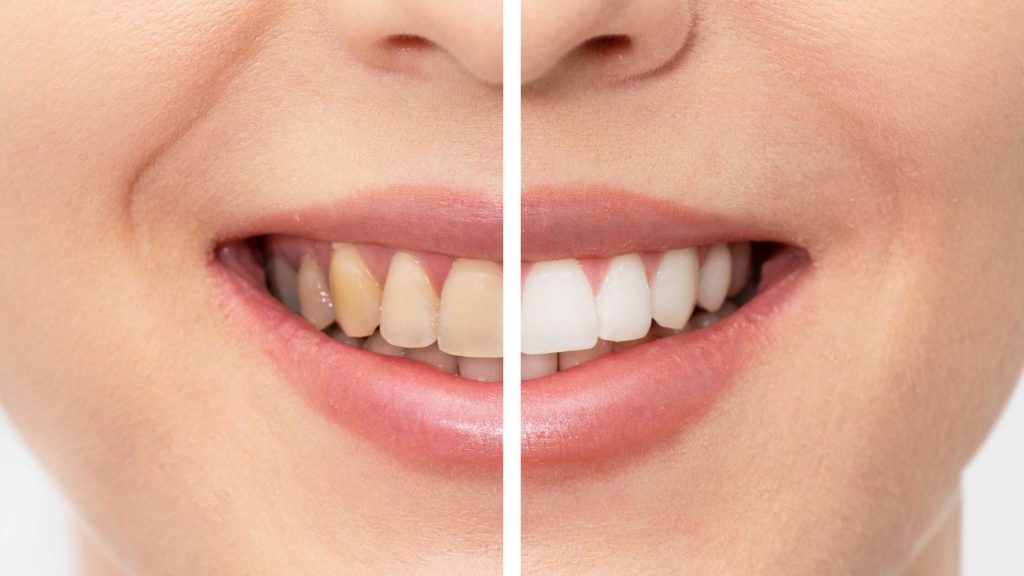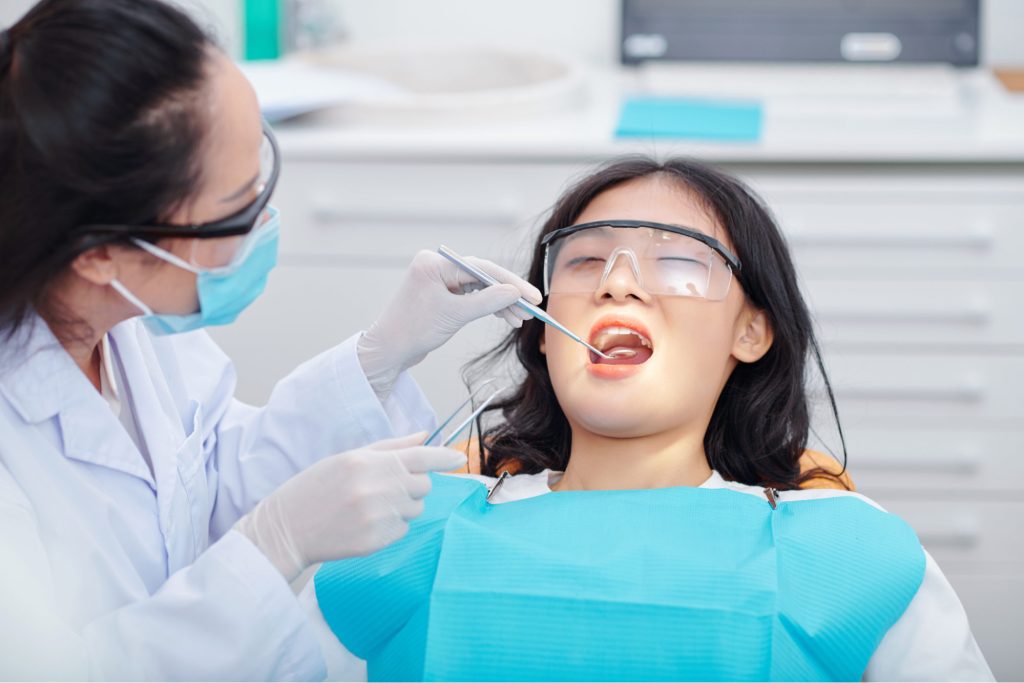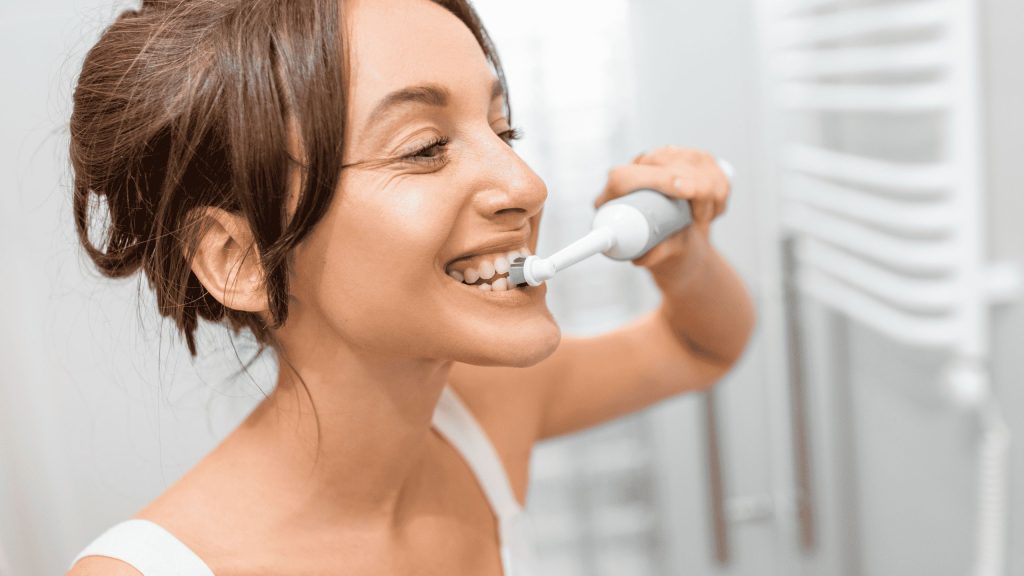Introduction
With the popularity of teeth whitening from home kits to professional in-office procedures, many people wonder if the bleaching agents used can cause harm to their natural teeth. It’s understandable to have concerns about applying chemicals and peroxides to brighten your smile. While generally minimal, some risk of tooth and enamel damage does exist with improper whitening use and technique. Here, we’ll look at how teeth whitening works, analyze the potential for tooth damage, and provide tips on whitening safely without permanent harm to your enamel or oral health. When performed correctly under your dentist’s supervision, modern whitening methods only cause transient, mild tooth sensitivity that quickly resolves after treatment.
How Do Bleaching Agents Whiten Teeth?
All teeth whitening products rely on carbamide or hydrogen peroxide to chemically lighten discoloration and stains in the teeth. Peroxide is an oxidizing agent that breaks apart large pigmented molecules responsible for yellowing and staining within the tooth enamel.
When peroxide gel comes into contact with your teeth, the unstable oxygen molecules penetrate the enamel surface and inner dentin layer. The oxygen then works to decompose the organic compounds that cause extrinsic surface stains from food and drinks and deeper intrinsic stains from aging or genetics.
The cumulative effect of repeated peroxide application over days or weeks is gradual lightening of stains and discoloration for visibly whiter teeth several shades brighter.
Does Peroxide Damage Tooth Enamel?
Tooth enamel is composed of mineral hydroxyapatite crystals that provide an incredibly hard, protective outer shell. Enamel is designed to withstand normal everyday exposure to foods, drinks, and environmental factors.
The effect of hydrogen peroxide on enamel is minimal and temporary. During whitening treatments, peroxide may cause:
- Surface Dehydration – Peroxide slightly dries out enamel, which can lead to brief sensitivity that resolves within a day or two after treatment.
- Surface Etching – Whitening gels are acidic, so very superficial etching may occur but quickly recalcifies.
- Increased Porosity – Small pores may open slightly during bleaching but remineralize with saliva.
- Oxidation – Peroxide oxidizes pigment molecules but does not disrupt the enamel crystals.
While these effects may allow slightly more surface stain absorption immediately after whitening, the enamel recovers quickly with rehydration and remineralization from saliva. The crystals themselves remain intact and undamaged.
Does Peroxide Weaken Tooth Enamel?
There is no evidence that peroxide exposure inherently weakens or damages the enamel structure long-term. Studies found no significant difference in enamel hardness, thickness, or permeability between bleached and unbleached teeth.
The slight dehydration is superficial and temporary, leaving enamel just as strong after recovery. As long as tooth sensitivity resolves within a few days after whitening, your enamel remains undamaged.
However, repeated overuse of peroxide without breaks could accumulate damage over time. Following your dentist’s recommendations prevents excessive exposure that might begin deteriorating enamel.
Risk Factors for Tooth Damage from Whitening
The majority of patients experience zero long-term tooth damage from professional teeth whitening under dental supervision. However, some circumstances raise the risk for more significant enamel weakening or harm, including:
- Overuse of peroxide at very high concentrations without dental oversight
- Bleaching teeth that already exhibit cracks, fractures, bulges, or cavities
- Having acidic dietary habits that erode enamel after it is dehydrated from whitening
- Returning too soon to smoking or heavily staining foods/drinks that discolor bleached enamel
- Repeated bleaching over weeks without taking any breaks for remineralization
- Using photosensitizing agents immediately after light-activated power whitening
- Unhealthy gums or exposed tooth roots that allow over-penetration of chemicals
- DIY application resulting in uneven bleaching and sensitivity at higher risk of becoming permanent
Tips to Whiten Your Teeth Safely Without Harm
You can take measures to optimize safety and minimize any damage to your enamel or oral health when whitening your teeth:
- Get an oral health exam to identify any existing conditions needing treatment before whitening.
- Select a dental-supervised whitening method instead of unmonitored DIY kits.
- Follow all instructions for application time and frequency closely.
- Opt for hydrogen peroxide concentrations under 10% or carbamide peroxide under 20%.
- Apply fluoride treatments immediately after bleaching to remineralize enamel.
- Rinse with plain water after exposure to peroxides.
- Wait 14-30 days between whitening treatments for enamel recovery.
- Avoid highly staining foods, drinks, and smoking for at least 48 hours after bleaching.
Conclusion
When performed properly under your dentist’s supervision, teeth whitening with hydrogen or carbamide peroxide has only transient, mild effects on enamel. Proper technique and moderation ensure your enamel remains undamaged while still appreciably brightening your smile. Visiting our office for the safest, most conservative whitening solutions gives you the confidence boost of a whiter smile without risking permanent harm to your teeth.





